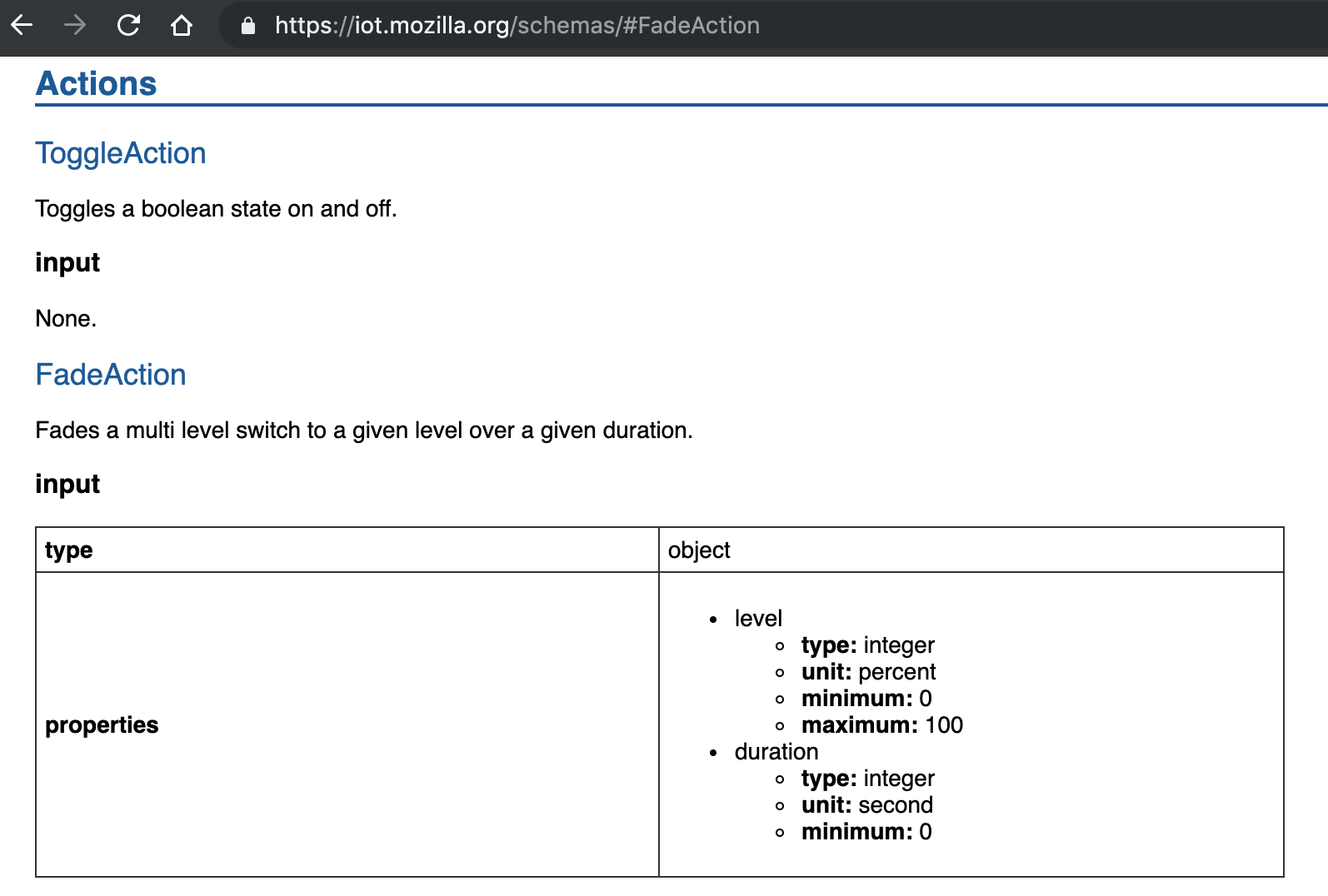GSoC 2019 Coding Period Week 10
I don’t think actions should be predefined. This is the description of the Action object.
2.11 Action object
An action object describes a function which can be carried out on a device.
Take a blinking LED on plugged into a Raspberry Pi as an example. I followed the tutorial Blinking LED on Raspberry Pi using Golang and succeeded in making the LED blinking. I need to customize the GPIO pin and set the pin to output mode. This is not predefined.
I think even though Actions Input and so on are defined, how to operate the hardware cannot be predefined according to the specification.

Action object content, such as the properties and https://iot.mozilla.org/schemas/#actions is the same as above except for the unit. One is second and another in milliseconds.

The description of the Action Object is similar to the functionality provided by JSON:RPC, which also provides remote procedure calls. The execute() method in JSON:RPC example: https://www.lullabot.com/articles/jsonrpc-to-decouple-everything-else. The Action must be like JSON:RPC, allowing the user to customize the execute() method.
/**
* {@inheritdoc}
*
* @throws \Drupal\jsonrpc\Exception\JsonRpcException
*/
public function execute(ParameterBag $params) {
// [Code simplified for the sake of the example]
$paginator = $params->get('page');
$service = $params->get('service');
$definitions = $this->container->get($service)->getDefinitions();
return array_slice($definitions, $paginator['offset'], $paginator['limit']);
}
That is the outputSchema() method that the user needs to implement in JSON:RPC.
The following code can be found in the mozilla-iot/webthing-node project single-thing.js, which is how you create things and add actions.
function makeThing() {
const thing = new Thing('urn:dev:ops:my-lamp-1234',
'My Lamp',
['OnOffSwitch', 'Light'],
'A web connected lamp');
// ...
thing.addAvailableAction(
'fade',
{
title: 'Fade',
description: 'Fade the lamp to a given level',
input: {
type: 'object',
required: [
'brightness',
'duration',
],
properties: {
brightness: {
type: 'integer',
minimum: 0,
maximum: 100,
unit: 'percent',
},
duration: {
type: 'integer',
minimum: 1,
unit: 'milliseconds',
},
},
},
},
FadeAction);
//...
return thing;
}
This is the definition of the addAvailableAction() method invoked by the code above
/**
* Add an available action.
*
* @param {String} name Name of the action
* @param {Object} metadata Action metadata, i.e. type, description, etc., as
* an object.
* @param {Object} cls Class to instantiate for this action
*/
addAvailableAction(name, metadata, cls) {
if (!metadata) {
metadata = {};
}
this.availableActions[name] = {
metadata: metadata,
class: cls,
};
this.actions[name] = [];
}
This is how actions return as a description. https://github.com/mozilla-iot/webthing-node/blob/master/lib/thing.js#L72
asThingDescription() {
//...
for (const name in this.availableActions) {
thing.actions[name] = this.availableActions[name].metadata;
thing.actions[name].links = [
{
rel: 'action',
href: `${this.hrefPrefix}/actions/${name}`,
},
];
}
//...
}
So I think I should not pre-define actions, but provide documentation and examples of how to add actions. This module will build canonical and secure routes like the mozilla-iot/ webthy-node project in this way, and will also provide methods to execute and output patterns like the JSON:RPC project. Users need to implement these methods themselves. I think Action is handled as follows.
- Add to methods that can be executed with params.
- Provides the schema that describes the results of the Thing Action.